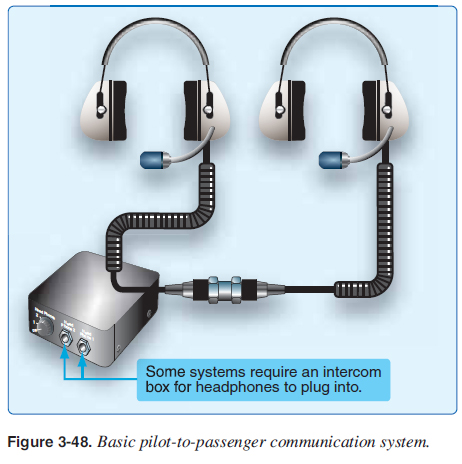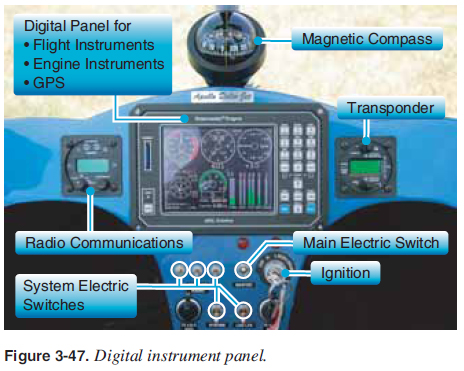
 |
|
||
| CHAPTER 3. Components and Systems
Communications There are three types of communications systems used in WSC aircraft:
Easy and clear communications between the pilot and passenger, or between the instructor and student inside the fl ight deck is important for the safety and enjoyment of both. Modern communications systems have advanced noise canceling systems in headphones and microphones to reduce engine noise and blast of air. Each system is unique, and the quality of the sound and noise canceling capability of the system varies. Some use voice-activated systems in which headphones activate only when someone is speaking into the microphone; others have a steady state in which there is no additional control of the voice activation. Since there is a large difference in systems available, it is best to test systems to determine what is best for the WSC aircraft being fl own. [Figure 3-48]  An aircraft radio is required for fl ying in any tower controlled airspace. Using a radio is not required at airports without a control tower but it is recommended for the safety of self, passengers, pilots in the air, and people/property on the ground. To broadcast to a tower or other aircraft, press a Push To Talk (PTT) button. A complete fl ight deck radio and accessory system schematic is shown in Figure 3-49.  A radar signal receiver/transmitter system is required at busy commercial airports (Classes C and B) and at altitudes above 10,000 feet mean sea level (MSL) (unless the aircraft was certifi ed without an electrical system to power the unit). This is known as a Mode C transponder that sends a signal giving the control tower an exact location and altitude of aircraft. [Figure 3-47]  Powerplant System The powerplant system is composed of the fuel system, engine, gearbox, and propeller. Here we will point out the basic components of these systems with their function and details covered in Chapter 4, Powerplant System. |
| ŠAvStop Online Magazine Contact Us Return To Books |